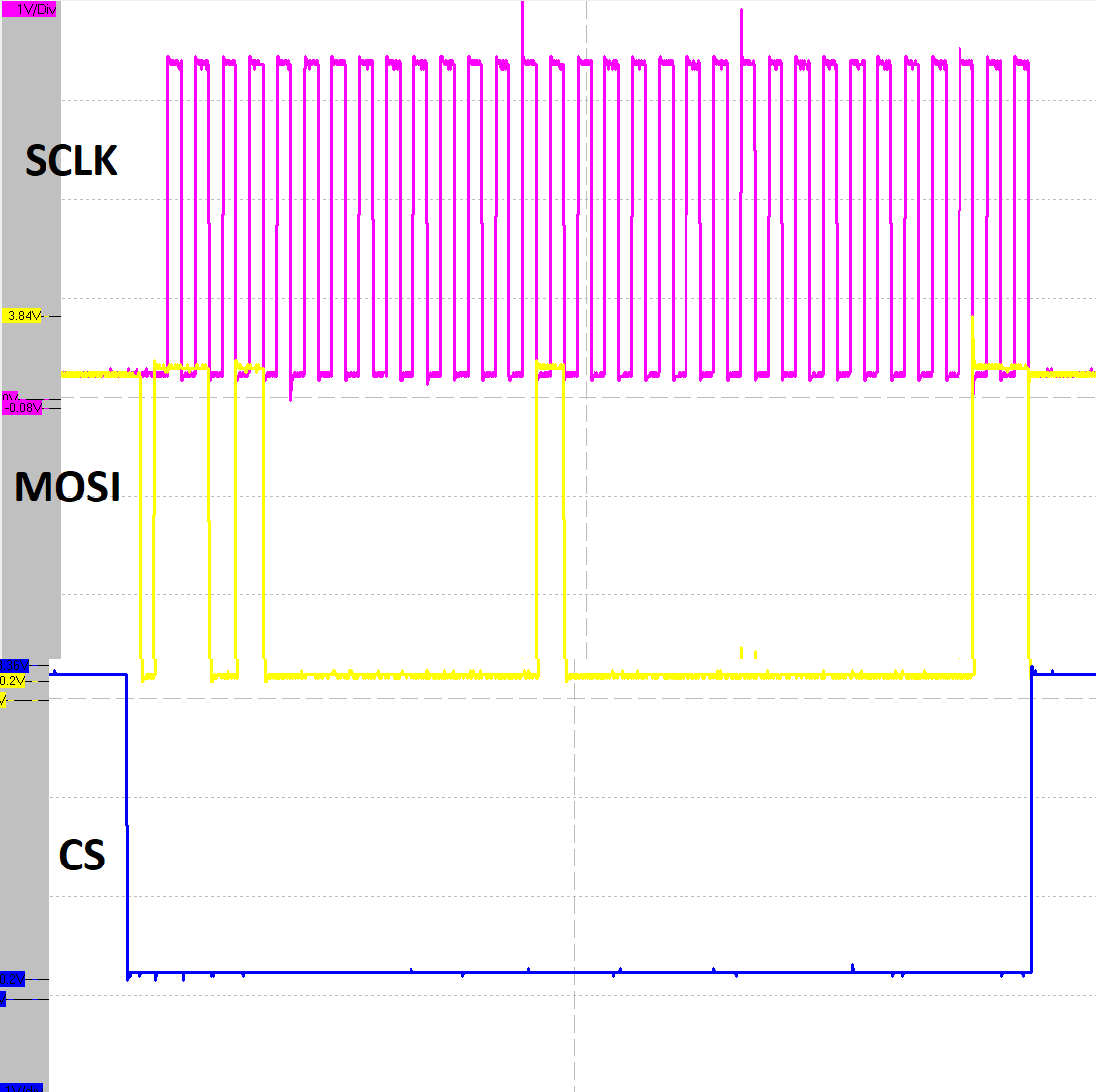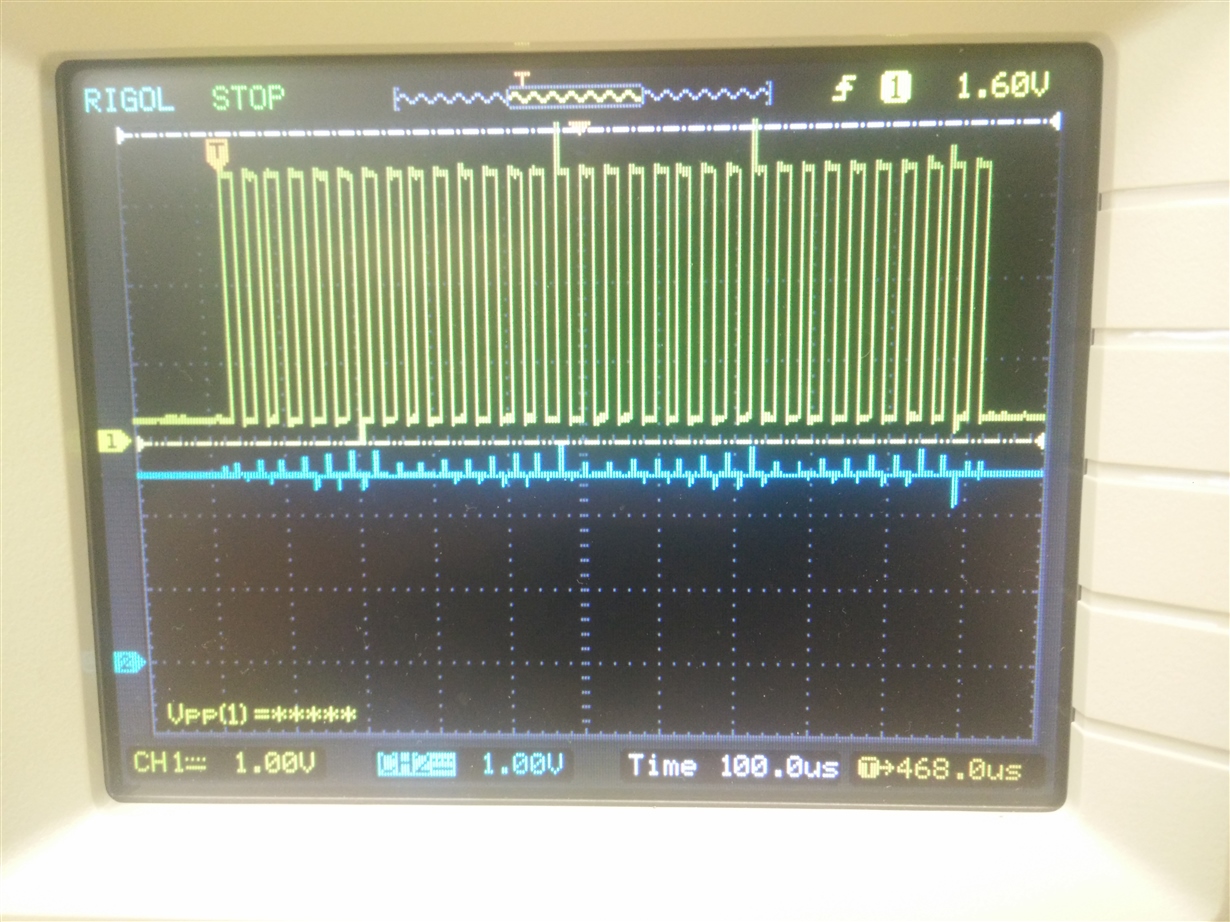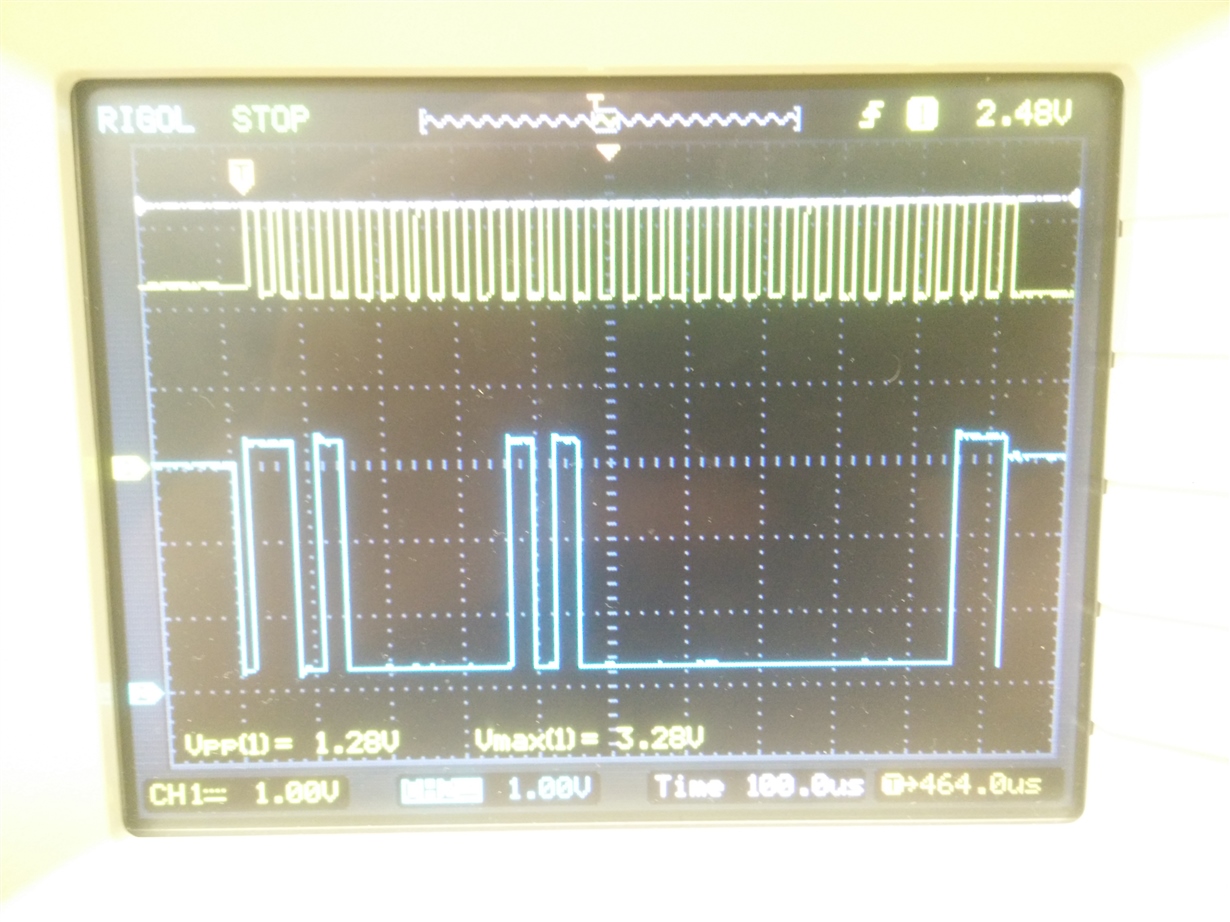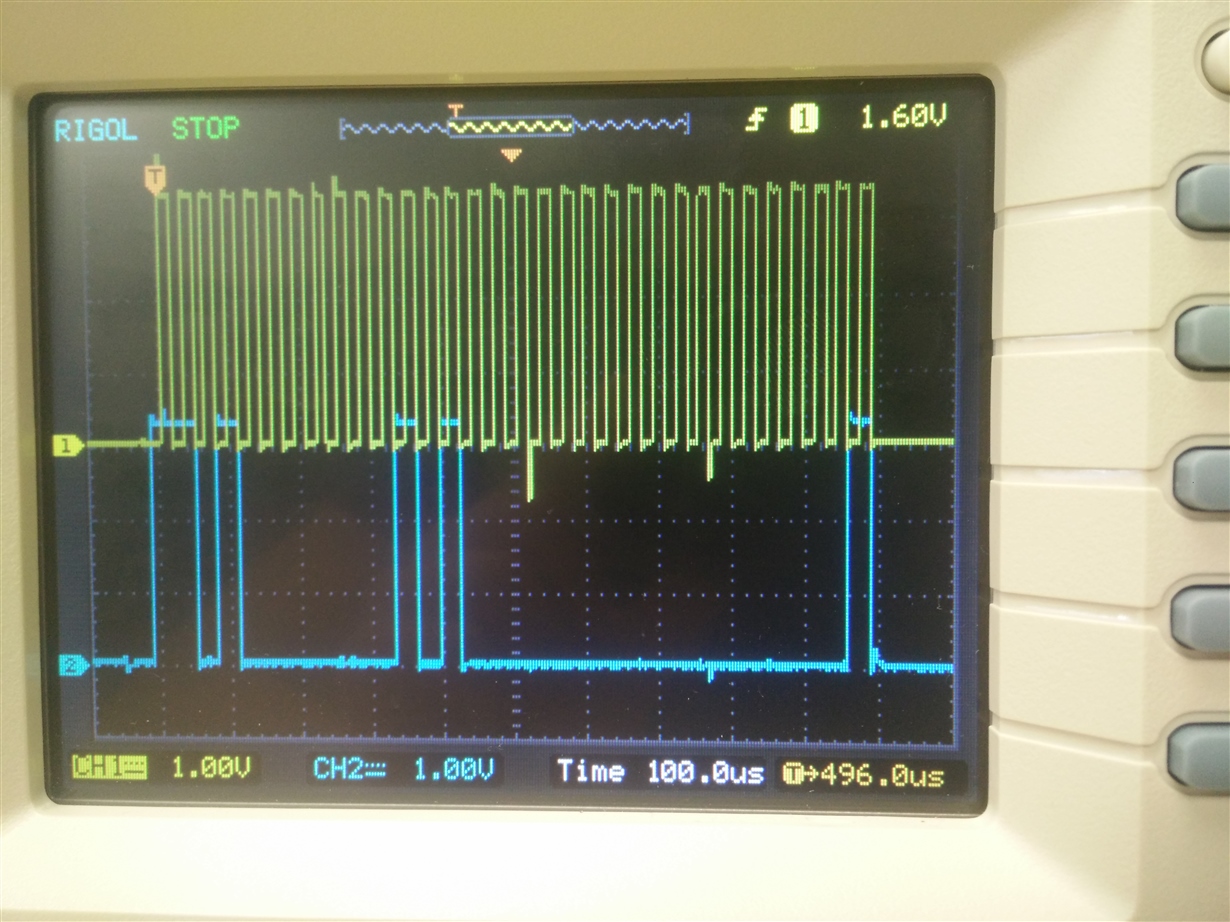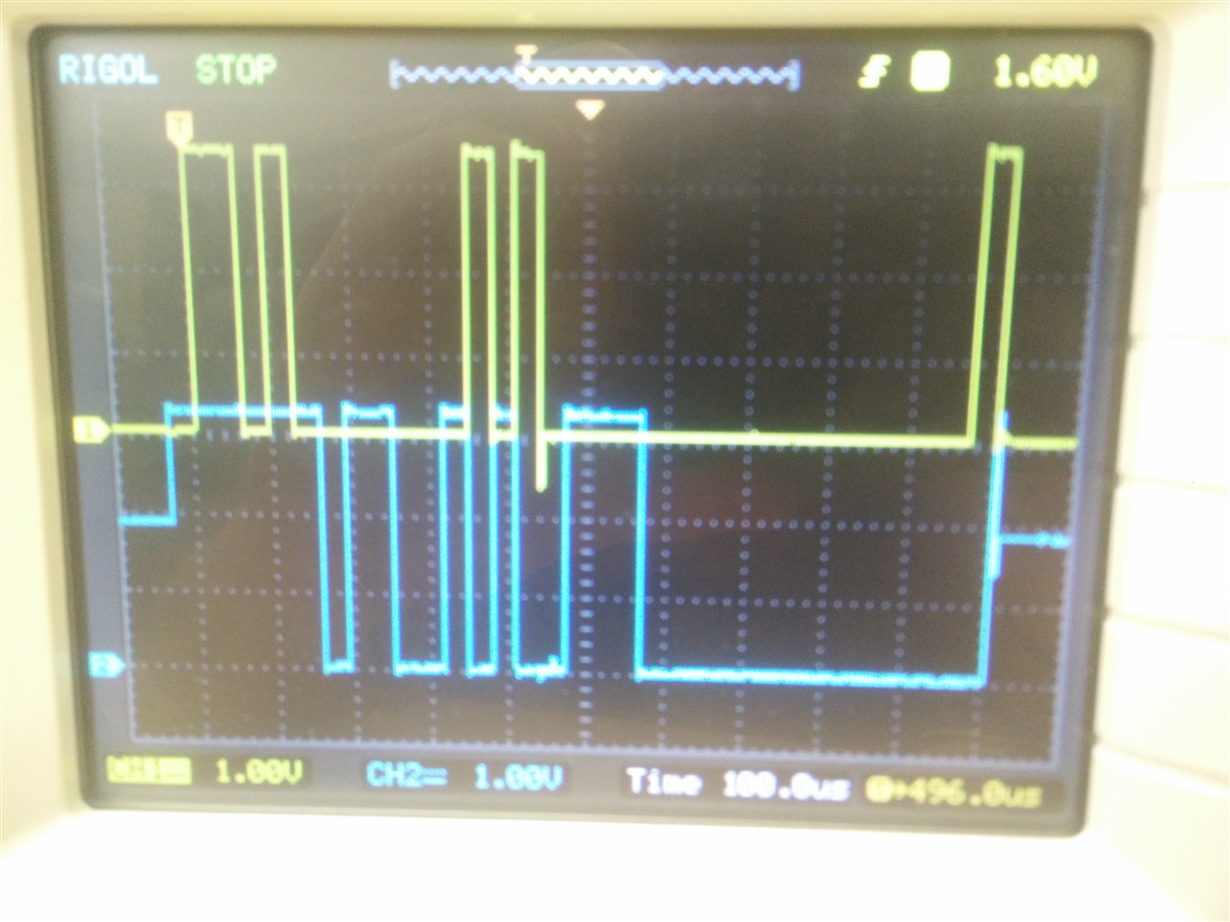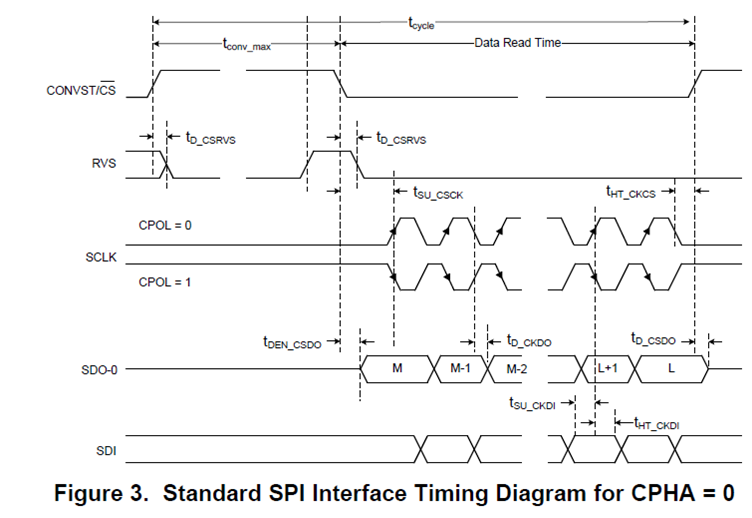Other Parts Discussed in Thread: TINA-TI
Hi,
I've connected the ADS8691 as followed:
1 DGND -> 0V 16 DVDD->3,3V
2 AVDD -> 5V 15 RVS
3 AGND -> 0V 14ALARM/SDO-1/GPO
4 REFIO -> +4,7uF- -> ground 13 SDO-0 -> MISO
5 REFGND -> 1uF-, 10uF- and ground 12 SCLK -> SCLK
6 REFCAP -> 1uF+, 10uF+ 11 CONVST/CS -> GPIO pin
7 AIN_P -> 10 SDI -> MOSI
8 AIN_GND 9 RST -> GPIO pin
For some reason pin 10 (SDI) what suppose to be a digital input pin gives the value 3,3 Volt even when disconnected from MOSI. I only connected it as shown above.
Is this normal? I also experience a lot of noise on the SCLK.
Best regards



